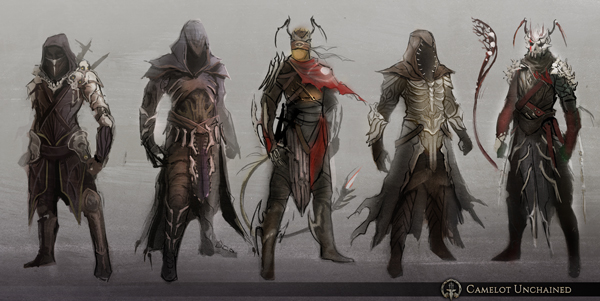

Other examples could be with our HelBound's faces, Hamadryad's tails, etc." For example, our Dvergr might have more stone covering their body and their beards will grow. The Q&A also addressed the role and importance of crafters, emphasizing that those players will be able to generate basic materials from their land and that they'll "contribute majorly" to battles.When Camelot Unchained ran out of crowdfunding money, Mark Jacobs did something unusual by today's standards: he put his hand in his own pocket and paid for development himself. Being delayed was developer City State Entertainment's fault so why should the community foot the bill? Camelot Unchained didn't begin offering houses or castles or spaceships (let's call them horses) for real money, didn't become an intoxicating shopping mall for pledging support. "It hurt," Mark Jacobs told me on the phone. He had already added $2 million of his own to the game's $2.2m Kickstarter tally to get the game made, but that was back in 2013, when Jacobs was talking optimistically about a 2015 Camelot Unchained release. He didn't realise programmers would be like gold dust and near impossible to find he didn't realise the game's ability system would fail and need rebuilding and he couldn't predict his wife would battle with breast cancer. $4.5m only took a team of 30 people so far. "It hurt my bank account a lot because I wasn't a billionaire or super-rich by any standard," he said. "But look, I made a deal, and I told backers I would do it. It was on us as a development team to deliver the game we did not. I made a choice and it wasn't an easy one: do I honour our commitment to those same people who gave us this chance by not treating them as walking wallets, or not? The bottom line is we did not meet what our projections were. "I understand why these other games do it but that was not for me. That's not how I wanted to live my life and run this studio. There were some very strong arguments to be made that if people are willing to spend the money, you should try to get it from them. I want to treat gamers the way I want to be treated. There's a better way to do things." Spells and animations and environments are not finished, but look how many people are fighting.

Jacobs' way was to - in a deal only announced yesterday - secure $7.5m to finish Camelot Unchained. Even if we didn't get a single other penny from crowdfunded donations, we'd be fine to get this game out," he said. Incidentally, Jacobs has known the investors for decades and nothing operationally will change. Now, the plan is to do a Camelot Unchained beta this year, with battleground brawls - Saturday night sieges as they're known - from the spring. "We are also shooting for a release in 2019 if - and it's a giant if - we can hire enough programmers," he said. "If we can, I am very confident we can deliver this game in '19. It may be late in '19 but I think we can deliver it."Īs it stands, Camelot Unchained looks a long way off. What videos there are resemble technical demonstrations of lots of characters running around in one big field there's no discernible game, with a shape and direction, on display. The core promise of Camelot Unchained was always to have hundreds - if not thousands - of people fighting in huge three-way wars, with no server crashes and slideshow game performance. The videos show Camelot Unchained partially achieving that.


 0 kommentar(er)
0 kommentar(er)
